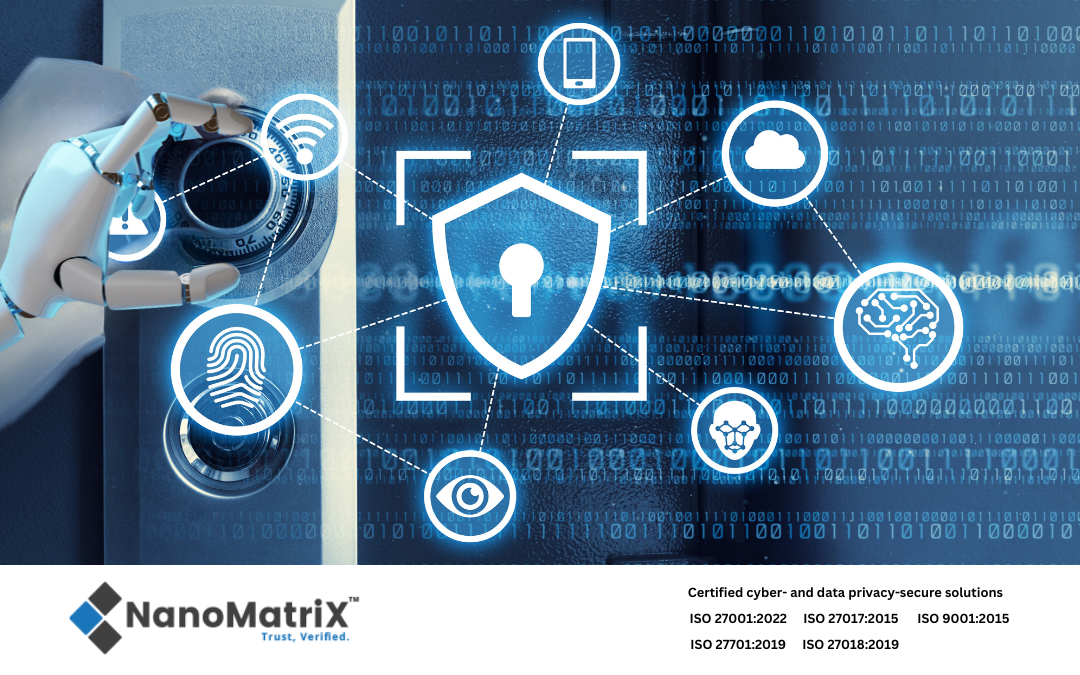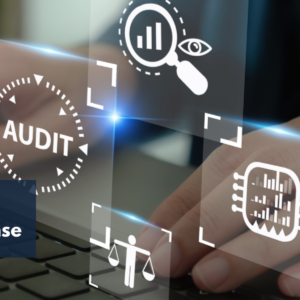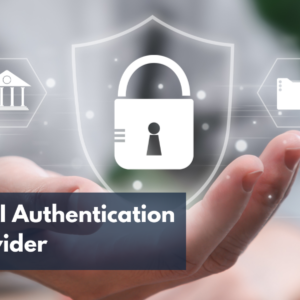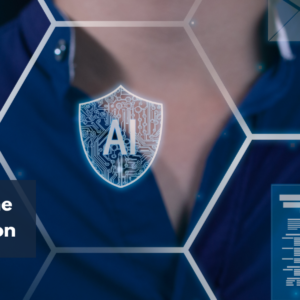This is the second blog post for NanoMatriX’s AI Learning and Awareness series.
Living a double life has become extremely easy due to criminals creating fake and illegal documents. In 2021 alone, the FTC received 395,948 Government Documents or Benefits Fraud cases. These were the cases that were reported, imagine those that weren’t.Document fraud and illegal duplication are surging explosively due to increased software’s capacity to handle and process large volumes of data instantly. But protecting documents is also becoming increasingly easier and accessible due to AI, ML, and their advanced algorithms that detect and identify the patterns appearing in fake documents. But how exactly can AI and ML benefit in document protection?
In this article, you will learn what AI and ML models are and how they can help in document protection. So, let’s get started:
What are Machine Learning and AI?
Although often used interchangeably, machine learning and artificial intelligence are distinct concepts. Artificial Intelligence (AI) is a comprehensive term encompassing various aspects, including machine learning and deep learning. Machine learning, on the other hand, is a specific branch within the broader field of AI.
AI refers to computer software designed to replicate human cognitive functions, enabling the learning and execution of intricate tasks. This umbrella term spans various applications, such as smart assistants, robotic vacuum cleaners, self-driving cars, natural language processing, and robotics. An illustrative example of AI is ChatGPT, an advanced language model.
In contrast, machine learning relies on algorithms trained on data to generate adaptable models capable of executing complex tasks without explicit programming. The primary objective of machine learning is to educate a system on performing a specific task and delivering precise outcomes by recognizing underlying patterns. Machine learning applications include speech recognition, facial recognition, traffic predictions, and pattern recognition.
Types of Document Fraud:
Instances of document fraud are on the rise within banks and Non-Banking Financial Companies (NBFCs), given their involvement in Know Your Customer (KYC) processes and onboarding procedures. The manipulation of documents for various motives poses a significant threat, potentially costing global economies billions of dollars. Fraudsters employ counterfeit documents for activities such as loan applications, property purchases, fraudulent insurance claims, and illegal international travel. The prevalent types of document fraud include:
1. Forged Documents
These are files with altered details, where fraudsters can entirely change or partially modify information. Forgeries may involve adding timestamps or watermarks, inserting or removing pages, and digitally altering signatures, compromising the integrity of the documents.
2. Invoice Fraud
In this scenario, an employee assumes the identity of a vendor and generates a false invoice. The deceptive invoice is then submitted to the company, leading to fund disbursement directly into unauthorized user accounts.
3. Blank Documents
Blank documents, often leaked from the manufacturing supply chain, provide an opportunity for the insertion of falsified information. The empty fields within these documents are susceptible to tampering and must be thoroughly verified for security purposes.
4. Camouflage Documents
Fraudsters create fake identities, representing themselves as government officials or authorized entities. Although relatively rare, this type of fraud can sometimes go undetected if not adequately scrutinized.
5. Counterfeit Documents
These are unauthorized reproductions of official documents. Counterfeiters use these counterfeit files to gain access to confidential information. For example, using a victim’s counterfeit driving license to extract details such as their social security number and bank account information illustrates the risks associated with this form of document fraud.
6. Product Return/Warranty Fraud:
This type of document fraud involves exploiting a warranty agreement or product return policy by purchasing an original physical product or service and subsequently returning a counterfeited product using the original invoice, where intentional false claims are made to obtain undeserved benefits.
Submitting false information, documentation, or invoice to support a warranty claim, intentionally damaging a product to seek warranty repair or replacement, falsely asserting a product’s theft or loss for a replacement under warranty, or purchasing a product with the sole intent of returning it for a refund or replacement are all considered warranty or product return policy fraud.
The Future of Document Protection with AI:
Brands and organizations may encounter hundreds of fake documents monthly. Businesses need AI and ML technology to recognize counterfeiters quickly and efficiently. AI and ML can protect documents through the following approaches:
-
Generate Digital Twins and Tokens For Your Documents
Counterfeiters have become good over the years and can replicate documents without someone doubting their authenticity. Before hunting down counterfeited documents, you must develop a system to distinguish your brand’s authentic documents from counterfeited ones.
Using digital tokens on your documents is a straightforward way of distinguishing them. These tokens can be QR codes or NFC tags. Each of your documents will get a unique QR code and a unique link. You get to control the activation of the digital tokens using an application system such as TrackMatriX SaaS. It is time to activate your anti-counterfeit QR codes, once they have been added to your products.
-
Activating and Tracing Authorized Documents
After activating the digital tokens from your application system, you can track the geo-location of each document from your system, which ensures that your documents remain safe and secure.
Suppose a counterfeiter copies one of your document’s digital tokens to add to their counterfeited documents. As soon as he adds the digital token, your application system will notify you of the duplicated digital token and its location. From this information, you can handle the counterfeiter and protect the authenticity of your documents.
-
Verifying a Digital Token using RFID tags or QR Codes
When any of your document’s digital tokens, specifically the QR code, is scanned, the user will instantly be redirected to a landing page of your choice, which will immediately verify the authenticity of your document to the consumer.
On the contrary, when a counterfeited document’s QR code is scanned, it will not redirect the consumer to a landing page, and the QR code will become unresponsive, further alerting users of the counterfeited document. This process is employed using machine learning, and that’s why it is quick, accurate, efficient, and scalable.
-
Document Protection Using NFC Tags, Seals, and Labels
Businesses can add tamper-proof anti-counterfeit NFC tags, security labels, and seals to their documents to protect and authorize them. These digital tokens can also be tracked, ensuring no counterfeiter ever tries to duplicate your documents.
How NanoMatriX Helps You Protect Documents in Real-Time
NanoMatriX knows AI since it wasn’t even common, we know how AI and ML can make a business grow. With its advanced cutting-edge AI solutions, NanoMatriX can protect your documents and help you make the most secure documents using the following techniques:
Detect Document Forgery
NanoMatriX provides solutions for document verification or signature authentication, in which our advanced generative models can be used to detect forgeries by analyzing the subtle difference between genuine and forged documents or signatures. NanoMatriX also provides a platform that is trained on vast datasets of authentic and fraudulent documents (contracts, invoices, certificates, etc.). Our AI technology analyzes the document provenance data, layout irregularities, font discrepancies, and inconsistencies in language usage, detecting any kind of document forgery. Seamless integration with multi-factor authentication technology ranging from biometrics to OTP devices can be provided.
Verify Data Consistency & Extraction
NanoMatriX can cross-check data across documents, validate against external sources, and extract key information so that you are ensured that your documents are protected with the latest AI technology and the data is safe and updated.
TrackMatriX SaaS
TrackMatriX SaaS is our platform made for your business so that your documents are protected. With advanced NFC, UHF, or hybrid UHF/NFC tags, QR codes, security labels, seals, and other document security features activated on your documents, you can identify their geolocations and are instantly notified of the location of any duplicate document.
Design Your Documents For Highest Security Levels
NanoMatriX can not only protect your documents but also prepare them for you according to International security regulations. We provide secure, custom-designed high-security printing solutions, visa labels, tax stamps, vouchers, tickets, educational certificates, and security foils.
Our solutions boast banknote-grade printing security, ensuring tamper-proof protection. Featuring a range of security measures, including overt, covert, ultra-covert, forensic features, and selective stain technology, NanoMatriX provides a robust defense against unauthorized document alterations or duplications.
Are AI and ML Necessary For Your Business?
After the release of ChatGPT in November of 2022, two types of businesses emerged in the industry. One group of companies rushed to adopt AI models while the other waited to see the hype. While some businesses showed impressive AI capabilities and developed unique products and solutions, some companies still need to build viable AI business models.
But it’s 2024, and businesses will soon realize and learn how AI reshapes the business world. As AI and its applications become increasingly popular, it’s time for decision-makers to discover that not every AI model will help your business succeed. Still, the correct type of AI model will undoubtedly help your business grow.
The answer to the above question is yes. The right AI and ML models are a necessity for improving your business.
Private AI Vs. Public AI Solutions: What’s Right For Your Business?
Private AI solutions Involve training artificial intelligence algorithms on data specific to a single user or organization, ensuring exclusive usage for the benefit of that organization.
Public AI solutions encompass artificial intelligence algorithms that are publicly available and trained on diverse datasets often sourced from users or customers. E.g. ChatGPT is a public AI solution that trains on all the data provided to it.
Why Private AI Solutions Are Better For Your Business?
-
Control:
Private AI offers greater control and customization for specific organizational use cases while Public AI provides Limited control with a black-box nature, optimized on existing data.
- Data Privacy:
Private AI ensures data privacy, protecting against compliance issues and preventing data exposure.
Public AI may expose sensitive data to risks, lacking control over privacy.
-
Security:
In private AI solutions, Data and Intellectual Property (IP) remain under organizational control, minimizing security risks. Alternatively, Public AI raises potential security and privacy concerns with shared data.
-
Data Source:
Private AI is Trained on specific, controlled data of a business or organization. Whereas Public AI utilizes publicly available data from diverse sources.
-
Cost:
In private AI, Initial investment with affordability is provided, especially using platforms like NanoMatriX. Public AI may seem cost-effective initially, but API-based models can lead to unpredictable expenses.
| Criteria | Private AI | Public AI |
| Definition | Trained on data specific to an organization | Utilizes publicly available data from diverse sources |
| Data Privacy | Ensures data privacy, protecting against compliance issues | May expose sensitive data to risks and lack control over privacy |
| Control | Offers greater control, and customization for specific use cases | Limited control, black-box nature of algorithms |
| Cost | Requires initial investment but offers affordability, especially with platforms like NanoMatriX | May seem cost-effective initially, but API-based models can lead to unpredictable expenses |
| Speed | May take time for in-house development and deployment | Offers quick deployment but may lack predictability in performance |
| Takeaways | Trained on specific, controlled data | – Suitable for experimentation, and learning, but risks data exposure |
| Ensures data and IP remain under organizational control | Potential security and privacy concerns with shared data | |
| Unique models for the enterprise, maintaining strategic independence | -Lacks customization, may not align with specific organization needs |
A private AI solution is always better for training AI algorithms for a specific business. They offer more security, data control, privacy, and peace of mind for handling an organization.
NanoMatriX understands that data security and privacy are important for businesses and that’s why our ISO-compliant anti-counterfeit brand and document protection solutions are specialists in handling private AI solutions. This ensures that your organizational data remains secure, private, and under your control. Contact NanoMatriX now to get a private AI anti-counterfeit solution for your business.
AI is The Future For Document Protection
To improve your business revenue and boost positive product experiences, you need to track down pirated documents and leverage AI in this process before the counterfeiters leverage it. AI technology can increase the effectiveness of tracking pirated documents for you.
NanoMatriX, a leader in AI, contributes to document protection by detecting forgery, ensuring data consistency, and providing advanced solutions for document protection and authentication. As businesses confront a rising tide of fake documents, adopting AI and ML becomes important for safeguarding document integrity and ensuring secure transactions in an increasingly digitized world.
In conclusion, start leveraging AI technology if you truly want to excel in your business.
About NanoMatriX Technologies Limited:
NanoMatriX Technologies Limited helps brands and organizations secure their data through its top-of-the-world and innovative AI-enabled, cyber-secure, data-protected, and cutting-edge software solutions. NanoMatrix Technologies Limited is a pioneer in introducing advanced authentication, document protection, traceability, and software solutions to combat cyber crimes, counterfeiting, and privacy breaches. Our secure, data-protected, standardized, and innovative technologies help safeguard brands, products, solutions, and documents from unauthorized reproduction and duplication.
NanoMatriX Technologies Limited is committed to the highest standards of security and quality. Our systems are certified and compliant with leading international standards, including:
- ISO 27001: Ensuring robust Information Security Management Systems (ISMS).
- ISO 27701: Upholding Privacy Information Management Systems (PIMS) for effective data privacy.
- ISO 27017: Implementing ISMS for cloud-hosted systems, ensuring cybersecurity in cloud environments.
- ISO 27018: Adhering to PIMS for cloud-hosted systems, emphasizing privacy in cloud-hosted services.
- ISO 9001: Demonstrating our commitment to Quality Management Systems, and delivering high-quality solutions.
Read the third blog post for NanoMatriX’s AI Learning and Awareness series here.
















Recent Comments